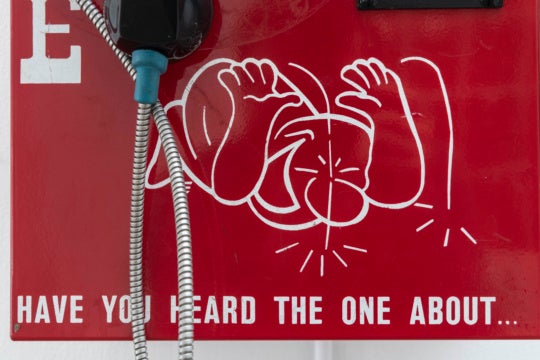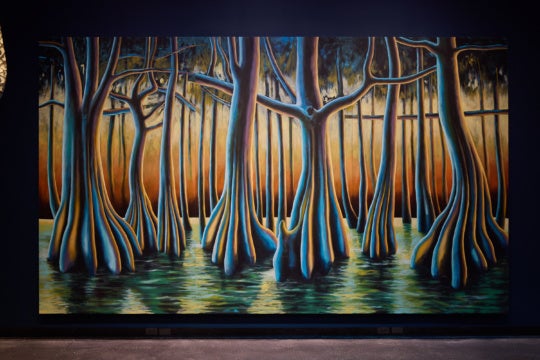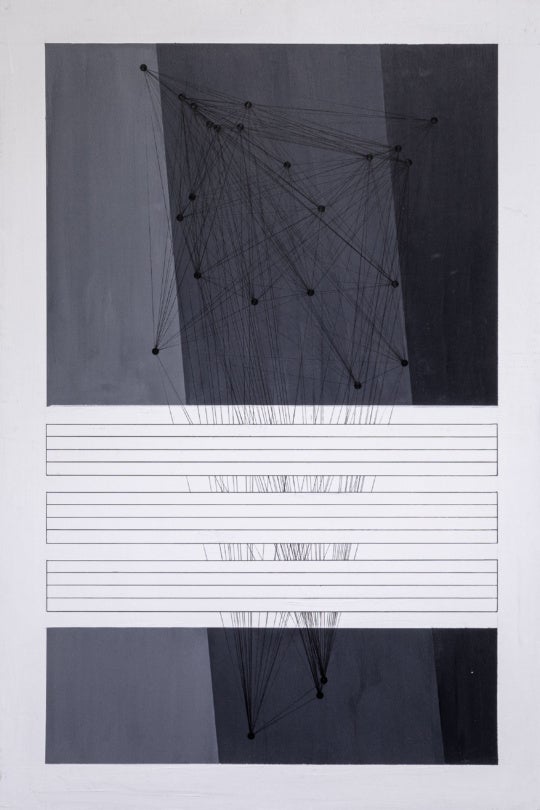
The new documentary The Black Panthers: Vanguard of the Revolution, which starts its one-week run tomorrow at Atlanta’s Midtown Art Cinema, introduces its subject by suggesting an almost incomprehensible complexity to the topic at hand. It’s a marvelous way to begin consideration of almost anything, but perhaps it’s especially fitting here. In the film’s opening scene, former Black Panther Ericka Huggins recounts the well-known Indian parable about a group of blind men who come across an elephant and try to describe it. One touches a tusk and says an elephant is like a sword; another touches the trunk and imagines an elephant must be like a snake, and still another feels a leg and believes it must be like a temple with sturdy columns. This, Huggins says, is a fitting metaphor to describe the Black Panther movement. Most people who were involved only touched one small part of an enormous, complicated, diffuse movement.
The task, then, for filmmaker Stanley Nelson Jr., is to try to collate as many perspectives as possible to form a cohesive and clear picture of the whole, a project the documentarian takes on with an admirable combination of comprehensiveness and succinctness in the new film. The movie leads us through the crucial years of the Black Panther party, using interviews and archival footage to examine the conditions that gave rise to the Black Panther movement, its founding, its key players, its struggles and triumphs, and its ultimate dissolution.
The Black Panthers opens during the turbulent ’60s, and the selected scenes from the time period show a world that’s both familiar and foreign. Under the specter of the Vietnam War, the Civil Rights Movement, and revolutionary postcolonial movements worldwide, members of the black community in Oakland, California, beleaguered and harassed by police, began to invoke the Second Amendment and armed citizen patrols to follow the police, a development that sent shock waves across the country. With archival footage of the Black Panthers entering the State Capital building to protest a bill that would revoke citizens’ rights to carry loaded weapons in public, the film reminds us of the complicated truth that the Black Panthers movement began—or at least came into the public consciousness—as a gun rights movement.

Women holding Black Panther flags.
The film shows the violent raids intended to squash the burgeoning movement, but it also shows how, more prosaically, what may have really sapped the resources and energy of the Black Panthers were court costs related to multiple arrests of its members on trumped-up conspiracy charges. A segment on FBI director J. Edgar Hoover’s COINTELPRO program gives a sense of the vigor and ruthlessness with which Nixon’s government sought to stomp out the movement and others like it. Such initiatives predictably sought to prevent the movement’s growth and the emergence of a charismatic leader, but, even more tellingly, the film details the program’s stated goal to prevent what was perceived as the greatest threat of all: that the movement had potential to gain respectability in American political life. The threat was not that the party was extreme; the threat was that the general populace might come to see that the Panthers had reasonable claims about social conditions.
The film also delves into another problem that famously fuels and infamously plagues revolutions: personality. Conflict of personality among key leaders such as Huey P. Newton, Bobby Seale and Eldridge Cleaver, whose understandings and articulations of the revolutionary moment were often radically opposed, is detailed with insight.

Especially interesting for artists, the film understands and fully considers matters of style. The Black Panthers, as Huggins indicates, were about many things, and the movement was also an aesthetic one. Emory Douglas, in particular, created many of its most iconic images. One image that the Black Panthers widely disseminated — armed young black men and women sporting afros, black leather jackets and sunglasses — was instantly recognizable, instantly meaningful, fervid and divisive. The Black Panthers’ message was spread through images, the written word, personal style, and art. The film leads us to consider that the Black Panthers were in some ways a victim of their own aesthetic success: when images of armed Black Panthers’ invading the California assembly were disseminated, it immediately inspired new decentralized chapters to sprout up everywhere. The party’s quick growth, openness, broad appeal, and escalating rhetoric were all key to its strength, but also played roles in its downfall. The image of disciplined, organized, armed black youth was a powerful and terrifying one for much of white America. The organizers underestimated the severity of the backlash.
There are, of course, fascinating parallels and relationships between that era and our own, but the film, perhaps wisely, does not comment on or even mention them; viewers will undoubtedly draw the comparison themselves.
The film doesn’t give us much about party’s main players — their family, childhood and adolescent backgrounds — which is an oversight; the key figures seem to arrive at the revolution fully formed. Still, the former Panthers who are interviewed today speak with pride and without regrets (though one speaker, in a heartrending scene, is tortured by feelings of responsibility for the death of his brother). What may be the film’s most telling image is also its most subtle: in old age, the Panthers are the picture of psychological, spiritual, and physical health.
Black Panthers members Stanley Nelson and Kathleen Cleaver will be present at the 7:20 screenings on October 9 & 10 at Midtown Art Cinema, which will be followed by a Q&A session. Nelson will also be present at the 1:30 matinee.
Andrew Alexander is an Atlanta-based critic who covers visual art, dance, and theater.




